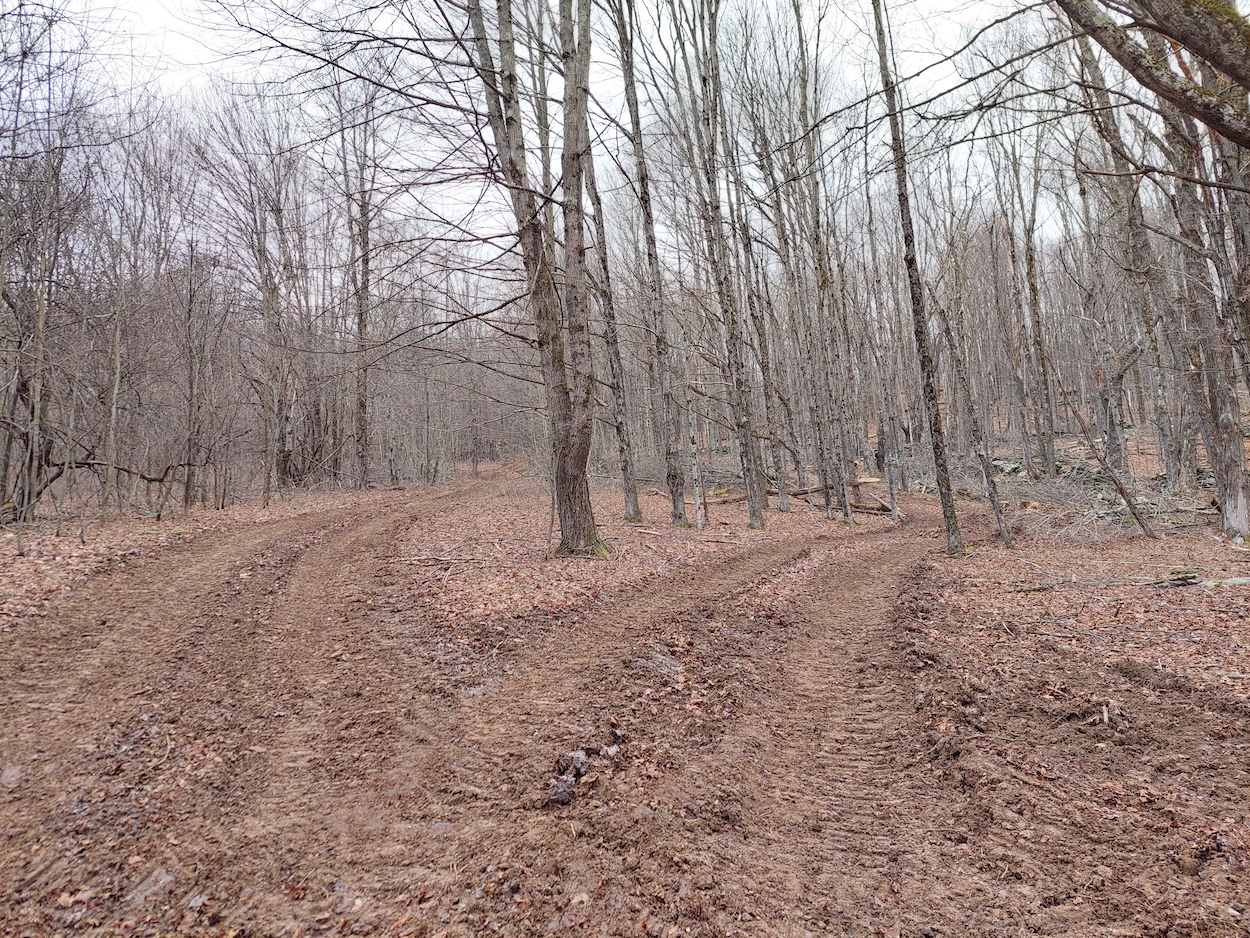On a cold January day, I was fortunate to have a logger explain the What, Why, and How of a cut-to-length timber harvest in the Catskills.
First of all, what is cut-to-length? This means that trees are delimbed and cut into desired log lengths in the woods before they are brought to the landing (an area used for log storage and loading onto on-highway log trucks). This is in contrast to a tree-length operation, where trees are also delimbed in the woods, but the entire stem is transported to the landing for processing.
The logger and I took a 1-mile ride in a side-by-side UTV to reach the area he was cutting with a feller-buncher. Along the way, he explained the scale of the harvest and the trees to be cut. It was a large harvest area of about 100 acres, while the total property acreage was about 2,000.
The woods were relatively young, having reclaimed what was once pasture. The landowner’s forester marked a lot of white ash and black cherry to be cut, along with some hard and soft maple (sugar and red maple, respectively). As we scanned the harvest area from the primary skid trail, every so often there was a blue dot on the trunk from the forester’s paint gun, which marked the trees to be cut. The logger figured the idea for this harvest was to prepare the woods for a more lucrative harvest of hard and soft maple down the road. As such, the logger wanted to do a good job and potentially get the nod for the next harvest in 10-15 years or so.
When we reached the feller-buncher, the logger topped it up with fuel from a 40-gallon tank on the back of the UTV. The UTV is handy not only for fuel transport, but it allows the machines to get warmed up faster in the morning. For example, one logger warms up the forwarder at the landing, while the other rides to the feller-buncher’s location to start it up. Otherwise, both operators would have to wait at the landing with the forwarder. Furthermore, leaving the feller-buncher parked in the woods saves fuel.

This particular feller-buncher is quite handy, too. It fells the trees in a controlled manner, which helps to minimize stem breakage, as well as damage to trees left standing (residual trees). It has a New Zealand-made Waratah processing head that delimbs the trees and cuts them into log lengths desired by the mill. The grapple on the processing head is used to move the logs short distances to the nearest skid trail (a process called shoveling) to be picked up by the forwarder, which transports the logs to the landing. This allows the forwarder to collect the logs more efficiently, as they are placed in bunches next to the trail.
I thanked the logger for a fun and informative tour and made my way back to toward the landing, checking out areas that had been harvested along the way. I examined the tree stumps. I saw blue paint at the base of a stump, verifying that this was indeed a marked tree to be cut.

I stopped to watch the forwarder operator collect cut-to-length logs and carefully stack them into the machine’s bunk. I wondered if it could carry a quarter, half, or full tri-axle truckload of logs (1 truckload = about 4 thousand board feet, or 4 MBF). I could see the benefit of the pre-bunched logs, saving the operator from driving to many scattered ones.

I noticed the logging slash (mostly tree tops) pushed into piles and sometimes scattered. The slash provides food and habitat for wildlife. I was sure the deer were nearby and ready to nip the buds from the downed tree limbs. The slash will also help to protect naturally regenerating tree seedlings from deer browse.


The larger-diameter slash looked like it would make for some great firewood. The logger had a market for firewood, but there appeared to be plenty for the landowner to pick through if they wanted.

I checked out the skid trails and how the secondary ones connected to the primary trail that led back to the landing. The soil disturbance from the forwarder (with attachable tracks) appeared to be minimal. I guessed this was one of the benefits of carrying logs in the forwarder bunk versus dragging whole stems, partially elevated, behind a cable or grapple skidder. The forwarder would also need fewer trips than a skidder to extract the same amount of wood.

Once back at the landing, I noticed how the crooked, sweeping firewood logs were stacked separately from the more uniform sawlogs that would go to the mill. There wasn’t much room on the roadside landing, but the loggers were making due. There were about 7 sets of wooden landing mats and a graveled section that provided a stable surface for the log trucks to get loaded. The gravel section adjacent to the highway would also help to keep mud off the road.

I learn a little more every time I talk with loggers and I am always interested to learn about the planning involved to execute a safe, efficient, and environmentally conscious operation. For example, before the operation got into full swing, the loggers took the time to put in water diversion devices (e.g., water bars, turnouts, and broad-based dips) and prepared 4 or 5 stream crossings along the 1-mile stretch of primary skid trail. I will highlight these efforts in a future blog. Thanks for reading.






